Have you ever looked closely at a coin and noticed it had different layers of metal? If so, you may have come across a clad coin. While most currencies worldwide are made from a single metal, clad coins have multiple layers to create a unique blend of durability and value.
In this article, we will explore the history and characteristics of these fascinating coins, as well as their role in modern currency systems. So, let’s take a closer look at what exactly is a clad coin.
What is a Clad Coin?
A clad coin is made up of multiple layers of different metals that are sandwiched together. In the United States, most clad coins have a core made of pure copper, surrounded by outer layers of various alloys such as zinc, nickel, copper, or manganese.
You might have noticed that most of the coins we use today have a shiny silver appearance. This is because it’s by design. It’s intended to mimic the luster of old pure metals such as silver.
Clad vs. Bimetallic Coins
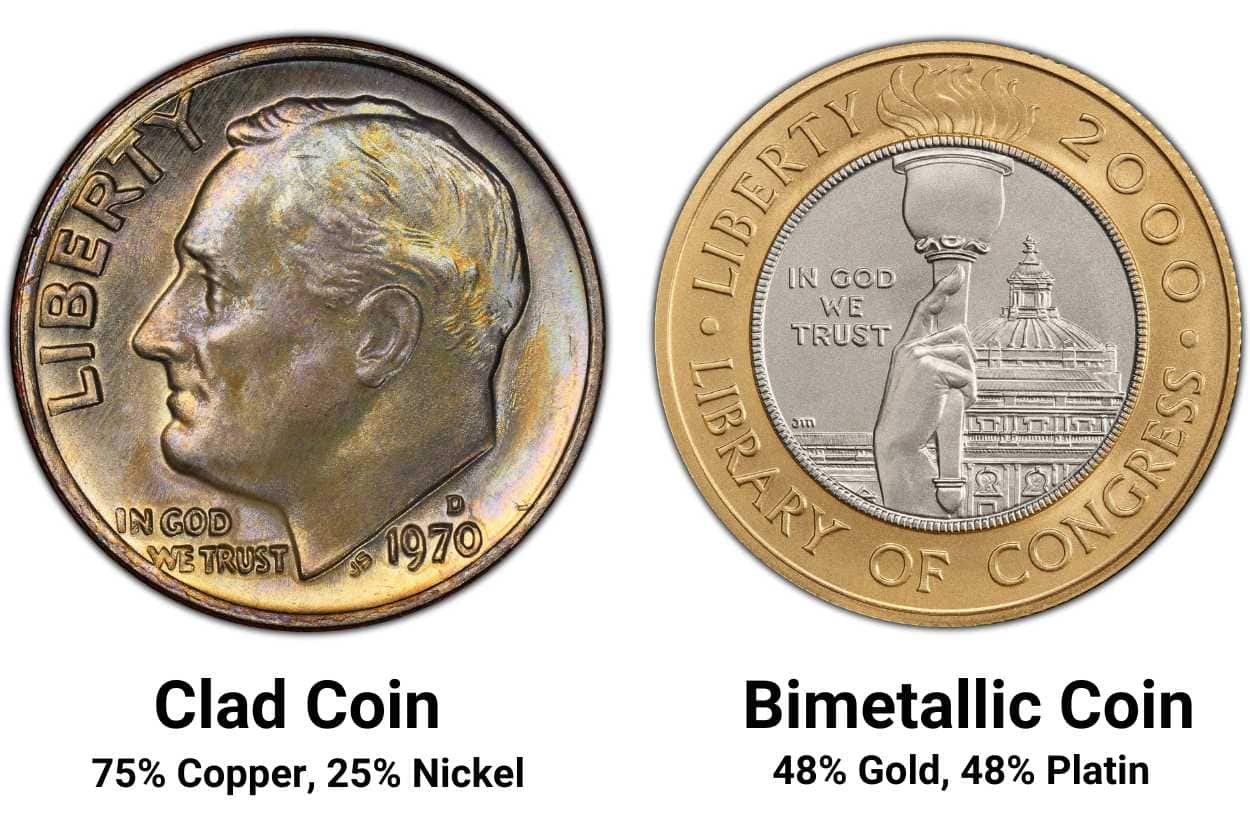
Bimetallic coins are often confused with clad coins. It’s due to the nature of having more than one metal in the coin-making process.
However, even though they have that as a similarity, they can be different from each other. Bimetallic is separated into two types of metal rather than the sandwiched layer of the clad ones.
The Composition of Clad Coins in the United States
The composition of clad coins can be divided into two categories:
- Core: The core of the coin contains the most amount of material. It refers to the middle and inner layers, which the clad will encapsulate. Most of the time, this core is made with copper, one of the cheapest materials in terms of bullion value.
- Outer Layer: The outer layer is the metal that clads the coin’s core. It covers the reverse and obverse sides of the coin. Most of the time, it is made of a cupronickel alloy or another variety of metal combinations. It gives it a distinct, almost silver-like shine, which is the goal of this coating.
The layering of the clad coins can be split into three: the obverse outer layer, the core, then the reverse outer layer.
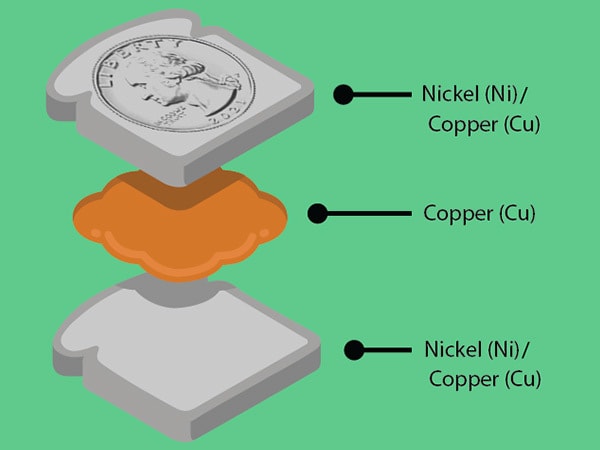
History of Clad Coins: The Coinage Act of 1965
Much like many changes in the US Mint, the influx of clad coins is brought by shortages in metal. Before 1965, many coin series contained silver, often with a small amount of copper, and some also contained nickel.
However, with the rising bullion value of silver, it’s not sustainable to produce anymore. Not only that, but the melt value is starting to be much higher than the face value of the coin. The result is many collect and hoard the coin, which will then be sold for melting.
To aid this dilemma, the congress passed the Coinage Act of 1965. The act mandated the production of clad coins to replace those containing silver.
This change was implemented in dimes and quarters, while the half-dollar continued to have 40% silver for a limited time before also adopting the copper-nickel composition in the 70s.
Nowadays, clad coins are the standard composition of US coins.
Different Types of Clad Coins in the United States
The United States Mint produced many clad coins throughout the years. Here is the type of materials they used and the coin series it’s present in.
| Type of Clad Coin | Composition | Coin Series |
| Copper-Nickel Clad | 91.67% Copper
8.33% Nickel |
Eisenhower Dollar (1971-1978) |
| 75% Copper
25% Nickel |
Roosevelt Dime (since 1965)
Kennedy Half Dollar (since 1971) Jefferson Nickel State Quarters (since 1965) |
|
| Copper-Zinc Clad | 97.5% Zinc
2.5% Copper
|
Lincoln Penny (1982 onwards) |
| Silver Clad | 60% Copper
40% Silver |
Silver Clad Washington Quarters (1965–1970, 1976)
Eisenhower Silver Dollars (1971-1974, and 1976) Kennedy Half Dollar (1965 to 1970) |
| Gold Clad (Manganese Brass Clad) | 77% Copper
12% Zinc 7% Manganese 4% Nickel |
Sacagawea Dollar |
Copper-Nickel Clad
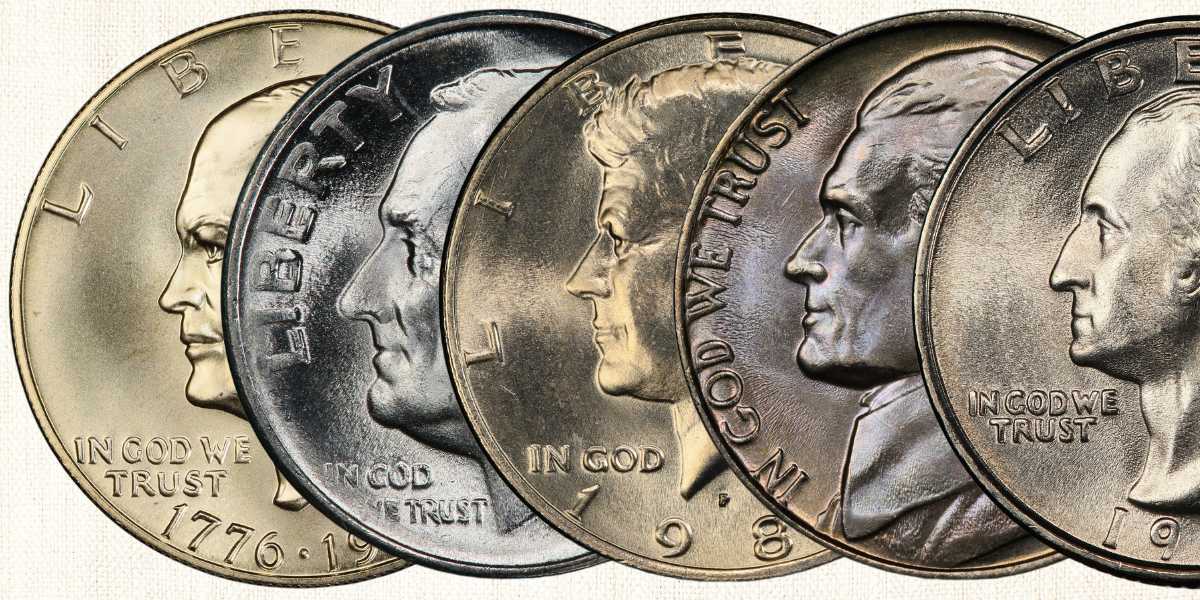
Copper-nickel clad is the most common type of clad coin in the US. As the bullion value of silver rises every year, copper-nickel has become the go-to material for circulating coins.
The copper and nickel content for the clad can vary depending on the amount the US Mint has. As you can see in the Eisenhower Dollar, it contains 91.67% Copper and 8.33% Nickel. Meanwhile, the common cupronickel clad contains 75% Copper and 25% Nickel.
Copper-Zinc Clad Coins
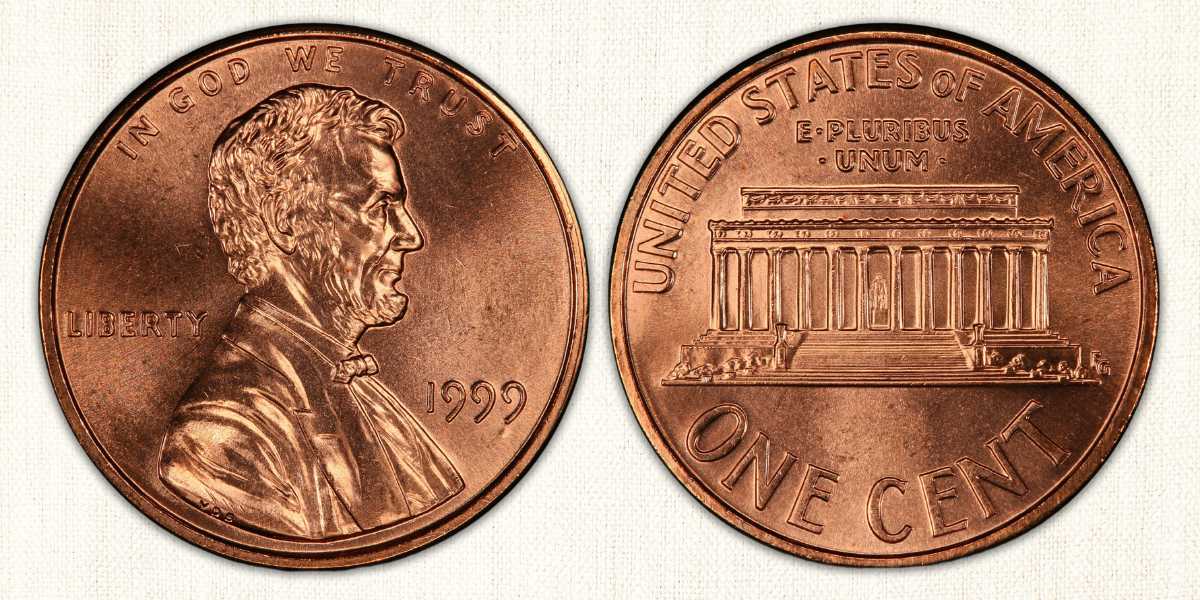
Utilizing the copper-zinc clad is a way to minimize the use of copper during times when availability is low or prices are high. Although not as popular as the copper-nickel,
Silver Clad Coins
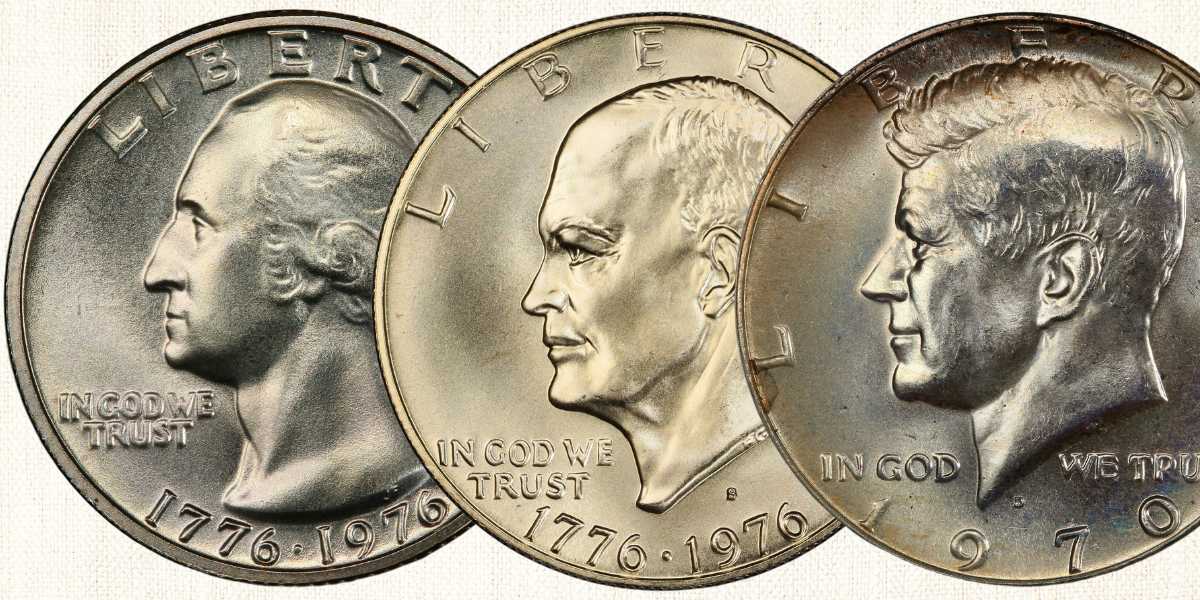
The Coinage Act of 1965 was passed to slowly remove the silver content in coins. The result is a series of coins with a clad containing 60% copper and 40% silver. These were pretty common from 1965 to the mid-70s. At the turn of another decade, the US Mint stopped producing these coins.
Gold Clad Coins

Despite having gold in the name, the ‘gold’ clad contains no gold. Instead, it has an outer layer of manganese-brass alloy and copper core. It’s used for the Sacagawea Dollar, giving the coin its distinct golden shine.
How do you Tell if a Coin is Clad?
As clad coins are made to have an almost silver-like shine, differentiating the two can be pretty confusing. So, here are some ways you can tell if you have a clad coin.
Check the Denomination and Design
The best way you can know if your coin is clad is by identifying its denomination and design. This way, you can search and see which coin series your coin belongs to.
Check the Weight
Most pure metal coins have a heavier weight than the clad ones. It’s also one of the ways you can differentiate an error-clad coin.
Look at the Coin’s Edge

Take a look at the side of the coin. Clad coins will typically have smooth or primary raised lines on the edge. Also, you’ll notice the changes in color as you can see the core and clad layers.
In Summary: Are Clad Coins Valuable?
When it comes to bullion value, clad coins are much lower than pure silver or copper coins. This is by design, as these coins are made to be much lower than their melt value.
That said, clad coins can provide higher value when it comes to error coins. With this guide to what clad coins are, you now have the knowledge when it comes to this fairly common coin!

Jenson is a professional numismatist, a dedicated coin collector, a graduate of the College of Business at Oregon State, a life member of the American Numismatic Association (ANA), and an overall coin nerd. He is the founder of Coin Value List.
